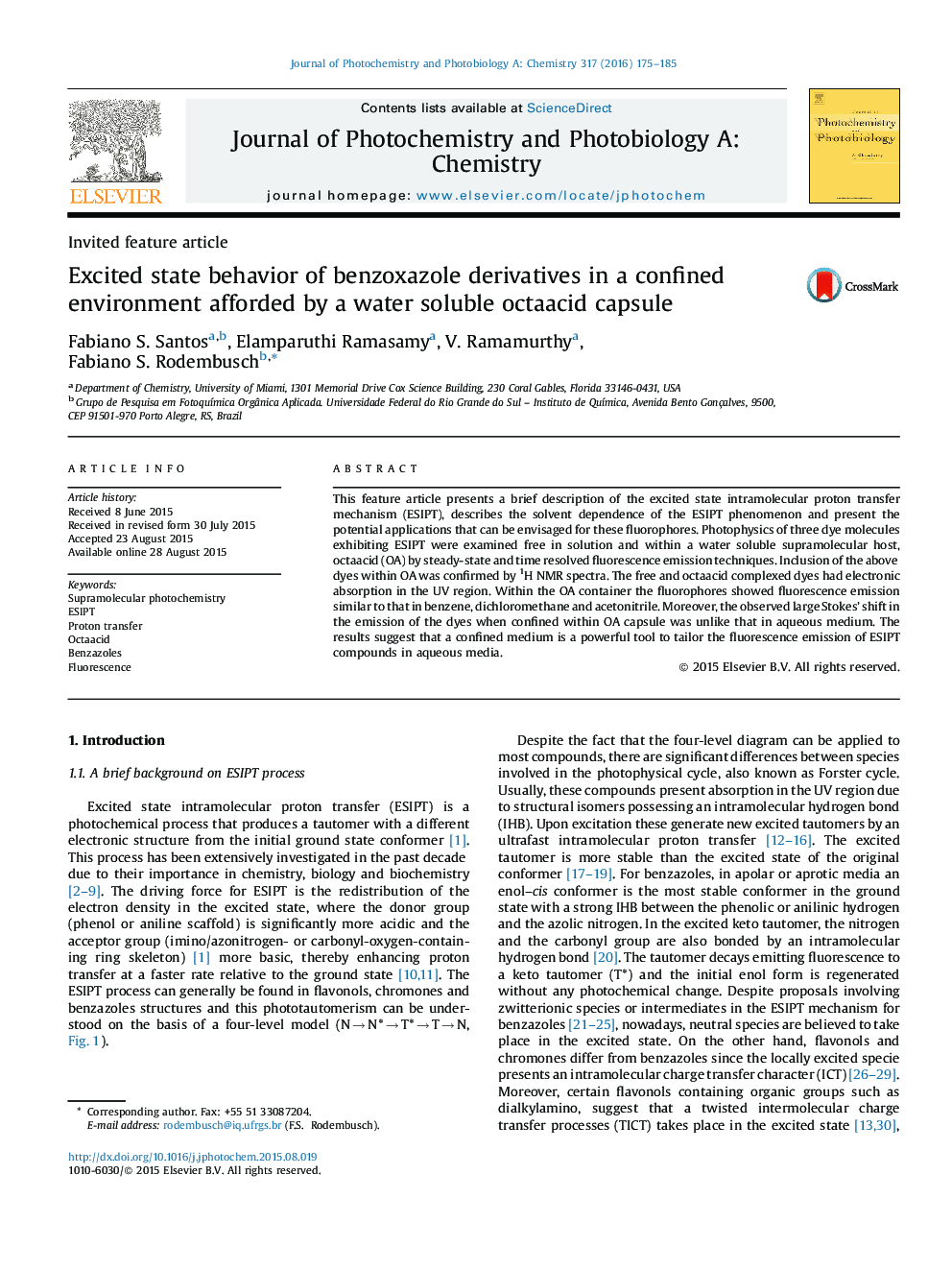| Article ID | Journal | Published Year | Pages | File Type |
|---|---|---|---|---|
| 26336 | Journal of Photochemistry and Photobiology A: Chemistry | 2016 | 11 Pages |
•Dual fluorescence emission free in solution.•Fluorescence emission within host OA similar to organic solvents.•Large Stokes’ shift due to ESIPT unlike that in aqueous medium.•Fluorescence emission tailored by the confinement in octaacid.•Within the host OA the ESIPT dyes are shielded from the bulk water.
This feature article presents a brief description of the excited state intramolecular proton transfer mechanism (ESIPT), describes the solvent dependence of the ESIPT phenomenon and present the potential applications that can be envisaged for these fluorophores. Photophysics of three dye molecules exhibiting ESIPT were examined free in solution and within a water soluble supramolecular host, octaacid (OA) by steady-state and time resolved fluorescence emission techniques. Inclusion of the above dyes within OA was confirmed by 1H NMR spectra. The free and octaacid complexed dyes had electronic absorption in the UV region. Within the OA container the fluorophores showed fluorescence emission similar to that in benzene, dichloromethane and acetonitrile. Moreover, the observed large Stokes’ shift in the emission of the dyes when confined within OA capsule was unlike that in aqueous medium. The results suggest that a confined medium is a powerful tool to tailor the fluorescence emission of ESIPT compounds in aqueous media.
Graphical abstractFigure optionsDownload full-size imageDownload as PowerPoint slide
